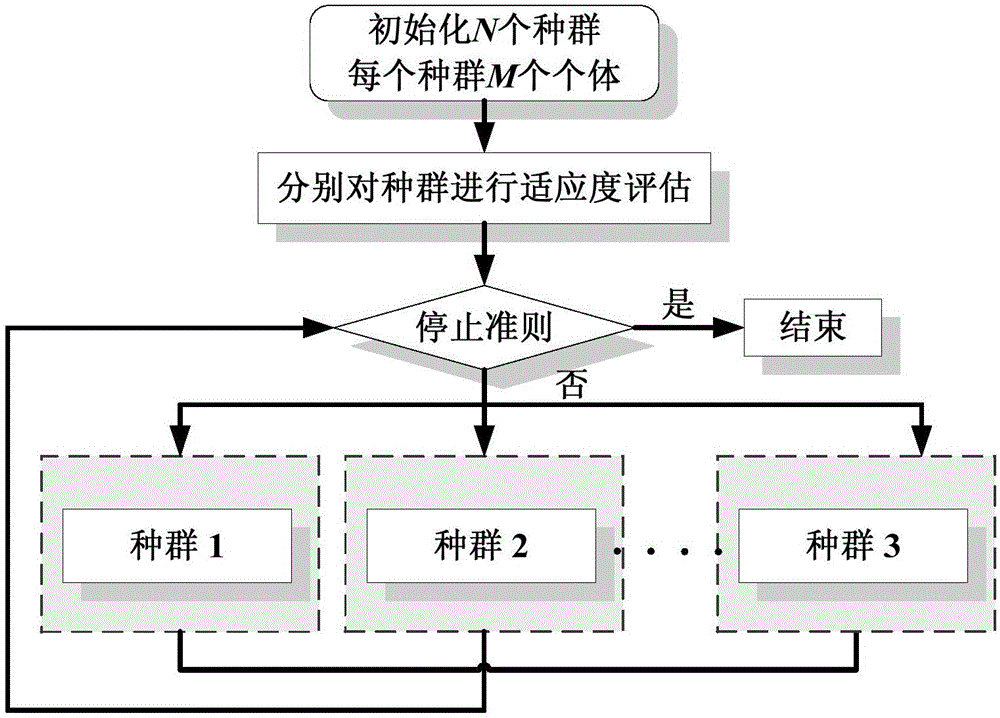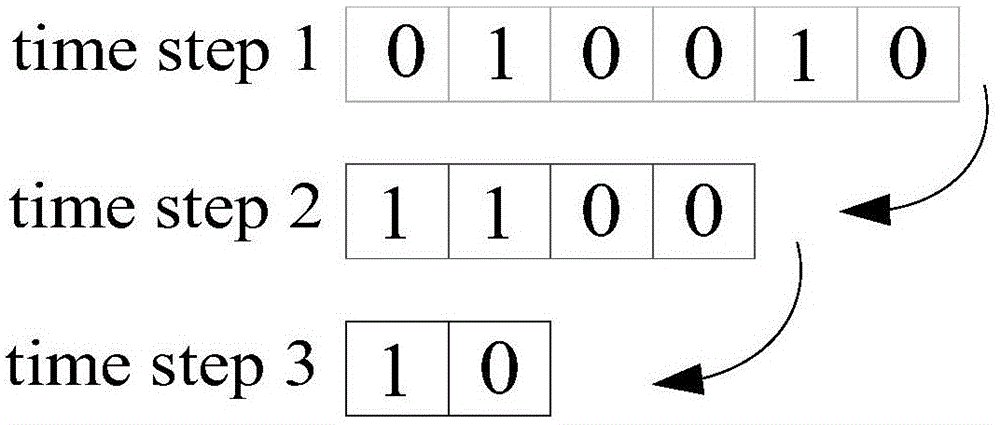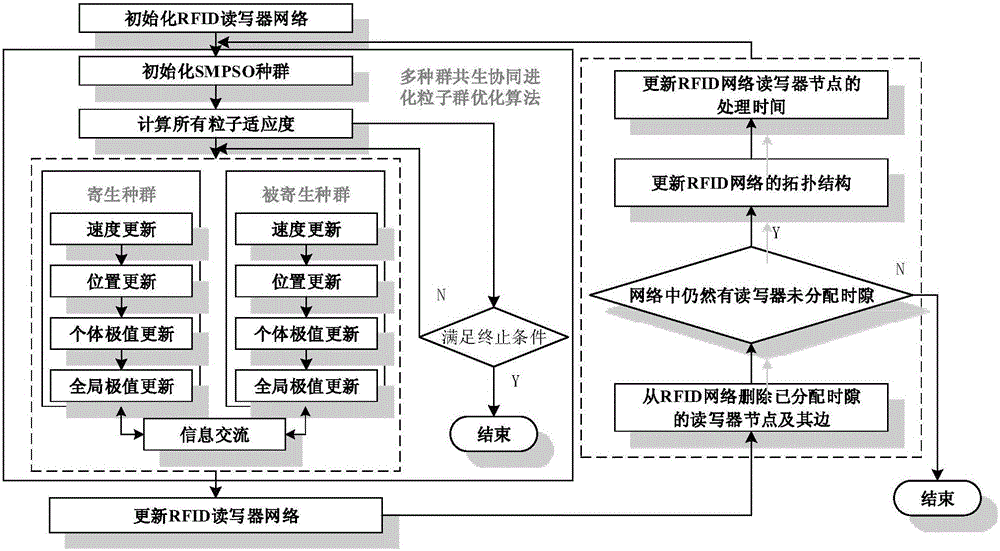RFID network reader scheduling optimization method based on multi-swarm particle swarm algorithm
A technology of RFID network and particle swarm algorithm, which is applied in the field of radio frequency identification and swarm intelligence algorithm, can solve the problems that the optimization performance cannot meet the requirements of satisfactory accuracy and stability, high implementation complexity, and large randomness of results, etc., and achieve global search Strong ability, high solution efficiency, and simple operation
- Summary
- Abstract
- Description
- Claims
- Application Information
AI Technical Summary
Problems solved by technology
Method used
Image
Examples
Embodiment Construction
[0024] The present invention will be further described in detail below in conjunction with the accompanying drawings and embodiments.
[0025] Based on particle swarm optimization, the present invention models the evolution models of biological communities such as mutualism, symbiosis and parasitism, and incorporates the idea of multi-population cooperation, such as figure 1 As shown, a scheduling optimization method for RFID network readers based on the multi-swarm particle swarm algorithm is provided, which can solve the reader-writer conflict caused by the overlap of the reading area or the frequency interference area of the RFID reader-writer, and realizes multiple The population evolves and cooperates with each other at the same time, which has the advantages of strong global search ability, fast convergence speed, and high optimization accuracy.
[0026] The reader conflict in RFID network can be described by graph theory method. For an RFID network with n readers, ...
PUM
 Login to View More
Login to View More Abstract
Description
Claims
Application Information
 Login to View More
Login to View More - R&D
- Intellectual Property
- Life Sciences
- Materials
- Tech Scout
- Unparalleled Data Quality
- Higher Quality Content
- 60% Fewer Hallucinations
Browse by: Latest US Patents, China's latest patents, Technical Efficacy Thesaurus, Application Domain, Technology Topic, Popular Technical Reports.
© 2025 PatSnap. All rights reserved.Legal|Privacy policy|Modern Slavery Act Transparency Statement|Sitemap|About US| Contact US: help@patsnap.com



